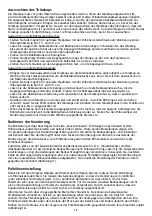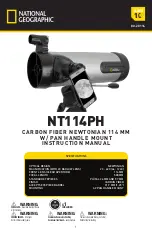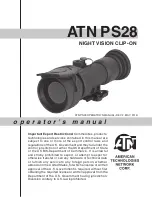
13
Optical accessories assembly
Your telescope can be equipped with additional accessories, such as eyepieces, diagonal mirror or
prism, or a Barlow lens. The accessories should be installed in well-defined ordering.
Refractors (fig. 6a): Loosen the focuser thumbscrew. Insert the diagonal mirror into the focuser tube
and retighten the thumbscrew to hold the diagonal mirror in place. Then, insert the desired eyepiece
into the diagonal mirror and secure it by retightening the thumbscrew. If a Barlow lens is needed,
install it between the focuser and the eyepiece.
Reflectors (fig. 6b): Loosen the focuser thumbscrew and take off the plastic cap from the focuser tube.
Insert the selected eyepiece and secure it by retightening the thumbscrew. If a Barlow lens is needed,
install it between the focuser and the eyepiece.
Optical finderscope assembly and alignment
Unthread two screws in the back of the telescope tube. Place the finderscope base above the holes on
the tube. Lock the finderscope base into position by tightening the screws (refractor 7a, reflector 7b).
Optical finderscopes are very useful accessories. When they are correctly aligned with the telescope,
objects can be quickly located and brought to the center of the view. Turn the scope end in and out to
adjust focus (fig. 8).
To align the finderscope, choose a distant object that is at least 550 yards (500 meters) away and point
the telescope at the object. Adjust the telescope so that the object is in the center of the view in
your eyepiece. Check the finderscope to see if the object is also centered on the crosshairs. Use three
adjustment screws to center the finderscope crosshairs on the object (fig. 9).
Focusing
Slowly rotate the focus knobs one way or the other until the image in the eyepiece is sharp. The image
usually has to be finely refocused over time due to small variations caused by temperature changes,
flexures, etc. Refocusing is almost always necessary when you change an eyepiece, add or remove a
Barlow lens (refractor 10a, reflector 10b).
Balancing the telescope
A telescope should be balanced before each observing session. Balancing reduces stress on the
telescope mount and allows precise slow-motion movements. A balanced telescope is especially crucial
when using the optional clock drive for astrophotography. The telescope should be balanced after
all accessories (eyepiece, camera, etc.) have been attached. Before balancing your telescope, make
sure that your tripod is balanced and on a stable surface. For photography, point the telescope in the
direction you will be taking photos before performing the balancing steps.
R.A. Balancing
• For best results, adjust the altitude of the mount to between 15º and 30º if possible, by using the
altitude adjustment T-bolt. Slowly unlock the R.A. and Dec. lock knobs. Rotate the telescope until
both the optical tube and the counterweight rod are horizontal to the ground, and the telescope tube
is to the side of the mount.
• Tighten the Dec. lock knob.
• Move the counterweights along the counterweight rod until the telescope is balanced and remains
stationary when released.
• Tighten the counterweight screws to secure the counterweights.
Dec. Balancing
All accessories should be attached to the telescope before R.A. balancing, and the R.A. balancing
should be done before proceeding with Dec. balancing. For best results, adjust the altitude of the
mount to between 60° and 75° if possible.
• Release the R.A. lock knob and rotate around the R.A. axis so that the counterweight rod is in a
horizontal position. Tighten the R.A. lock knob.
• Unlock the Dec. lock knob and rotate the telescope tube until it is parallel to the ground.
• Slowly release the telescope and determine in which direction it rotates. Loosen the telescope ring
clamps and slide the telescope tube forward or backward between the rings until it is balanced.
• Once the telescope no longer rotates from its parallel starting position, retighten the tube rings and
the Dec. lock knob. Reset the altitude axis to your local latitude.
Summary of Contents for Skyline PLUS
Page 2: ......











































